Esther Iverem brings traditional African art
November 9, 2018
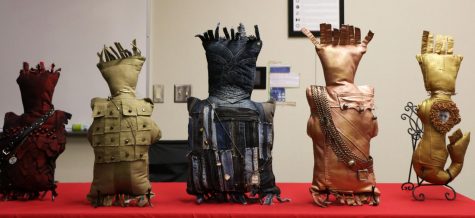
Recently made Olokun figures by Iverem on display in the Levan Center at Bakersfield College.
Journalist Esther Iverem read passages from her most recent picture book “Olokun of The Galaxy,” and showcased her award-winning Olokun figures on Oct. 30 in the Levan Center at Bakersfield College.
Iverem spoke to the audience of about 60 people to give a personal presentation of her book, which is filled with beautiful poetry and unique illustrations, that tells the story of Olokun, an African spirit from the deepest ocean.
Olokun was born when the ocean was born and witnessed all the ocean had endured, such as the Atlantic Slave Trade, the Industrial Revolution, human pollution and climate change. The book’s purpose is not only to honor those who perished in the Maafa, or the Middle Passage, but also to inform and warn others about the harmful effect humans have on the environment and our oceans.
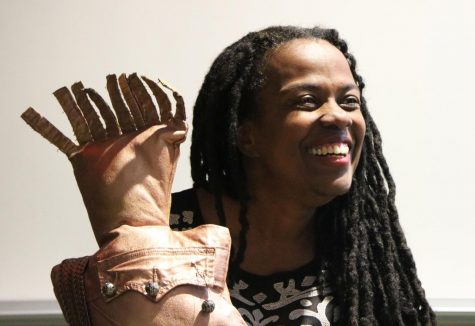
Esther Iverem answers questions from the audience about her book, “Olokun of the Galaxy.”
In a passage from her book, Iverem read, “And just as satellites and space junk surround the earth, an island of plastic floats in the Pacific. The detritus and counterproof of human progress, swirling at the end of the dying known world. Earthquakes come more and more. Tsunamis rise on their hind legs. The planet warms above and below. A new glow of methane slowly rises underneath. Olokun, trapped there since the last great freeze, and now escaping, stays off the day when plankton gasps for oxygen. For when the plankton die, oceans will blank out in darkness.”
Iverem is a writer, producer, artist, and curator that has spent a majority of her career writing for major publications such as the Washington Post and the New York Times.
As an activist, she has always had a passion for the environment, social justice, and human existence, seen through her past works and art installations.
Her Olokun figures are dolls made from reclaimed fabrics, mainly denim and pants. Iverem encourages the use of these reclaimed fabrics because of the high pollutions rates the fashion industry creates, primarily due to the creation of blue denim.
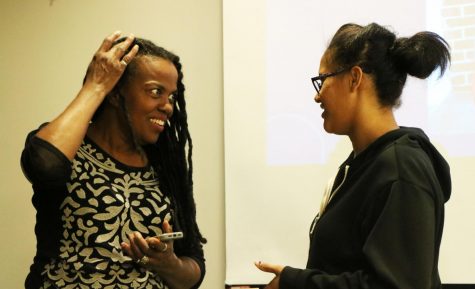
BC student Mikeisha Lowder talks to Iverem about the process of making the traditional African Olokun figures.
“It has tied into my whole exploration of the impact of the Atlantic slave trade because those blue jeans were one of the first things created with that cotton in that triangular trade,” Iverem said.
When asked what the strongest connection her art has regarding the environment and the slave trade, Iverem explained: “The Atlantic Slave trade was central to the development of Capitalism, then to the Industrial Revolution, which in turn is the generator of pollution that is detrimental to human existence and our planet. So to me, my work is a way of using art to uniquely talk about the oceans in a way that scientists or big organizations can’t describe.”
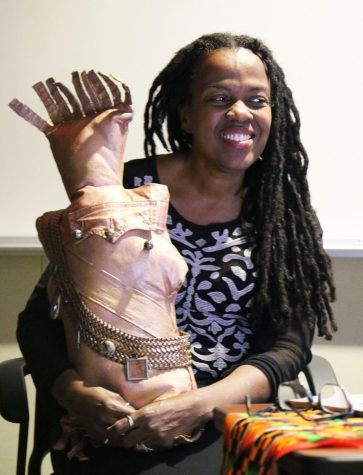
Iverem holding one of her Olokun figures made from reclaimed fabric.


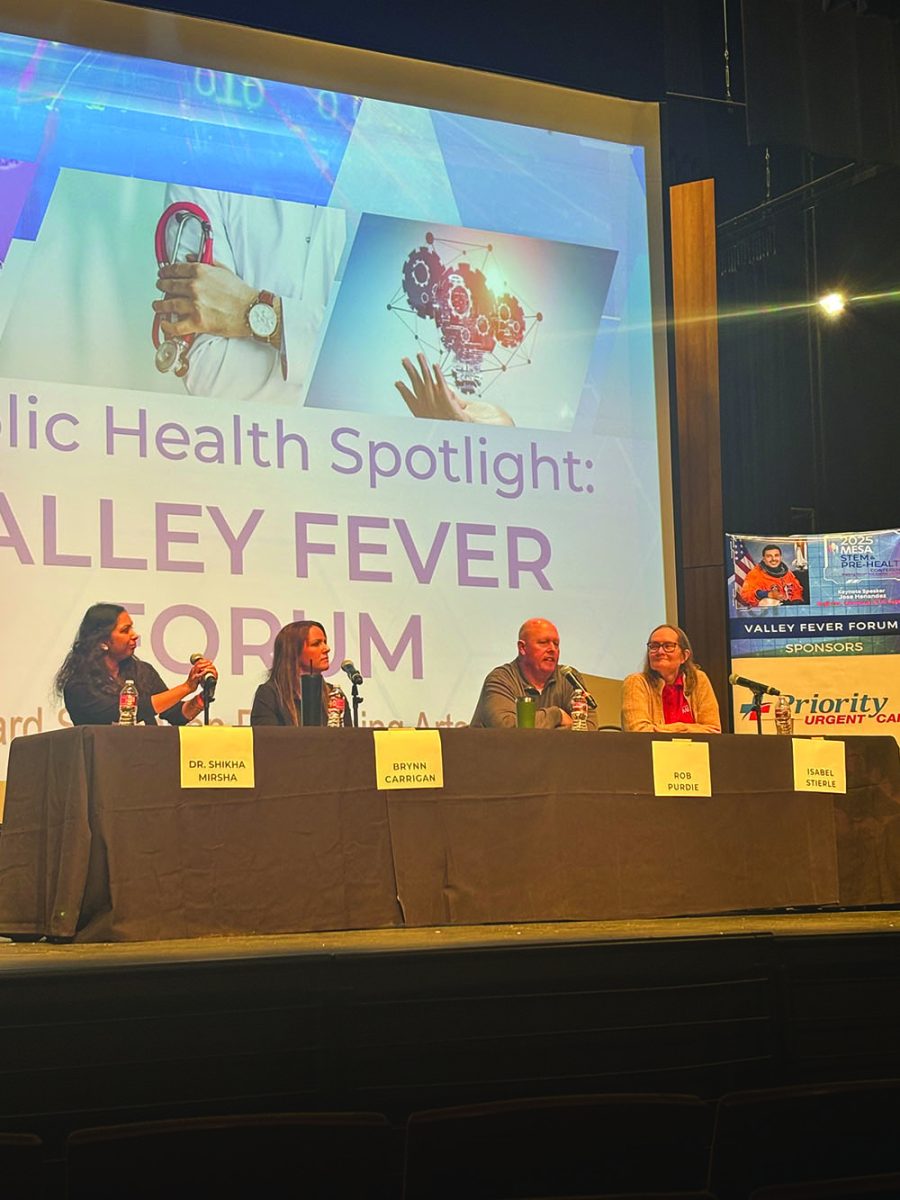



Esther Iverem • Nov 25, 2018 at 10:55 am
Thank you so much Cassidy for covering the event and these great pictures. I really enjoyed my visit and the discussion.